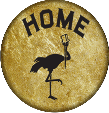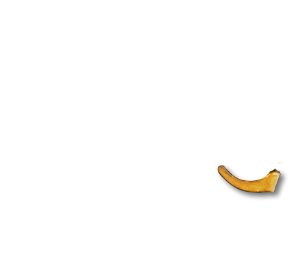“The only night-club owner listed in Who’s Who in America is Sherman Billingsley. The fine type following his last and first name in the July supplement to the 1943 edition of that collection of big-shot biographies begins with ‘…owner, Stork Club. Born in Enid, Oklahoma, March 10, 1900. Educated in grade schools in Oklahoma. . .’
Now I have nothing against Who’s Who in America, but that seems to be a mighty dull way to make a reader acquainted with the proprietor and host of a colorful and glamorous institution on Fifty-third Street, Manhattan, U.S.A., which future historians may refer to as the Mermaid Tavern of our time. A Mermaid Tavern complete with debutantes.
. . .After all, there is a great deal of difference between the Stork Club and every other night club in the world. It has no floor show, no line of undraped girls and no excruciatingly witty master of ceremonies. The absence of that last attraction may be one reason why so many customers are always trying to beat their way through the front door every Saturday night. It also has no melancholy French blues singer who speaks no English. That seems to be all right with the customers, too. Why, bless your hearts, I could make out a case stronger than the nuts, as the saying is, meaning the three shell game, against any form of entertainment in night clubs whatsoever, and cite the Stork as proof of my contention.
Instead Mr. Billingsley concentrates on nice furniture and interior decoration and good food. He is not afraid to keep the lights on so that you can see what you are eating. I am told that he also serves fine liquor which will not remove the enamel from the teeth. And, unlike other nightclub owners, he keeps his peppy and pleasant dance music toned down so that you do not have to shout at the top of your lungs to make the punch line of the story heard above the roar of the brass and crash of the cymbals.
But the best attraction in the house is the kind of people you see and meet there. The Stork Club is swanky but not snooty. Its clientele is always an interesting mixture of the more bearable members of the Social Register set, the well-mannered politicians, sports people, show people, writers, businessmen, scientists, artists, doctors and lawyers. . . .But the trade at the Stork consists mainly of nice people from the big and small towns of America whose names you never see in the Broadway columns. And, last but hardly least, those beautiful debutantes and their undergraduate escorts. What I am trying to point out is this: the Stork Club, unlike most other night clubs and restaurants I know, is not a hangout for any particular kind of mob. . . .
Mr. B’s hand signals give away three hundred thousand dollars’ worth of gifts to the customers every year. Mr. B belittles the cost of his generosity. ‘You must remember,’ he says, ‘that I don’t spend as much on gifts as other night clubs do on floor shows. And I spend nothing on newspaper advertising.’ The Stork Club gifts range from automobiles, wrist watches, expensive jewelry and solid-gold cigarette lighters to dice and cigarette holders. He specializes in perfume – which is free to every lady in the powder room – and lipstick, which comes in three shades named after his three daughters, Jacqueline, Barbara and Shermane. He gives dolls to the little girls at lunchtime and official major-league baseballs to the boys. He used to send Franklin D. Roosevelt bow ties. On Sunday nights before the war, he staged balloon parties which he hopes to resume again soon. At these parties the patrons would scramble for hundreds of floating balloons to which were attached one-hundred-dollar bills, tickets for free parties at the Stork Club and coupons which entitled the bearer to receive silver cocktail sets, pedigreed dogs and even horses. . . .
Anything can happen in that house on Fifty-third Street. Leonard Lyons, tells, for example, about the evening in November, 1941, when American-Japanese relations were strained to the breaking point. A reporter, sitting in the Cub Room, heard for the first time about an important statement on foreign policy made by Prince Konoye in Tokyo that afternoon. He asked for a telephone. The call went through quickly and Table Fifty talked at length with the Japanese government official. . . .
The present headwaiter of the Stork Club is a short, fat and bald little man named Victor Crotta. When Mr. B opened the original institution in 1929, he hired Victor as headwaiter. Victor stuck it out for a few months. Then he handed Sherman his resignation. ‘I don’t think you are going to be a success,’ he said.
Victor opened a restaurant of his own on Fifty-second Street and later gave that up to go into the liquor-importing business. In October 1942, he dropped in to see Mr. B and asked if he could go to work for him again. ‘I think you are going to be a success,’ he said.
Victor’s second guess was undoubtedly correct.
The End”




